In This Issue
- Flanigan’s EcoLogic: Gardening in the Pandemic
- CCAs’ World-Class Program Designs
- The Duck Curve in Focus
- California’s Microgrids and Wildfires
- Battery-Ready Homes
- Black Wind Turbine Blades
- Hydrogen Fuel Cell Power Plant
- French and German EV Sales

Flanigan’s EcoLogic: Gardening in the Pandemic
In the midst of a pandemic, it seems that there is no better time to focus on new and healthy practices, or revisit old ones, that develop commitments that better ourselves and our environment. During this time of instability and uncertainty, we’re living an existence that is far from the norm, so we’re holding on to things that bring us comfort, safety, stability, and self-reliance.
There have been surges around the world in activities that are sustainable: Biking, baking our own bread, and home gardening… pedaling, rising, and blooming around the world. People seem to be coping with isolation by going back to the land, replacing human contact with nature. In cases, traditionally mown lawns are being replaced with urban gardens, often with raised beds. All you need is a little sun, water, and a positive attitude!

The International Association of Horticultural Producers is a group formed in Zurich, after World War 2, with the mission to kindle and maintain an enduring relationship with plants. It has released a fact sheet on the benefits of gardening in the pandemic. It’s about connecting; it’s about something bigger than the amount of food grown. Another writer nailed it: “But let’s be honest, you’re not going to be able to feed your family from a backyard vegetable patch. So why do we love to grub around in the dirt so much?”

There is something enticing about it. Fruit and vegetable seed sales are booming in this current climate. Seed suppliers were expected to be completely wiped out early on during lockdown. Instead, their sales are like never before. While many realize that gardening won’t sustain a whole family–it is a great supplementary activity. Some are even seeking advice on extracting seeds from produce bought in grocery stores when they can’t buy the seeds at garden centers.

With so many people digging into gardens for the first time — whether they are located in yards, kitchen windowsills, balconies, or even trash bags to grow potatoes — gardening networks are rapidly expanding to discuss and learn best practices. It has become a creative outlet for many of us. It has created a sense of community around something that is tangible–contact with something real that we can control with nurture.
Scotts MiracleGro has just released a study of gardening and lawn care during the pandemic. Fully, 55% of American adults are engaged in gardening or caring for their lawns. Why? Their primary reasons: a) keeping busy (54%), b) a sense of accomplishment (49%), c) to reduce stress (48%), and d) access to fresh food (33%). Those that are working outdoors do so for an average of two hours per day; half of the respondents stated that this is more than usual.
Planting the seeds, watering, and watching vegetables and fruits grow brings us back to our roots. There’s something special about the harvest. Getting back to the earth through gardening is especially therapeutic during uncertain times. Considering that most of us have experienced a shift in our daily routines, home gardening can help make this adjustment smoother and healthier.


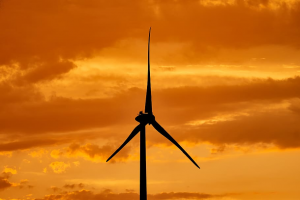
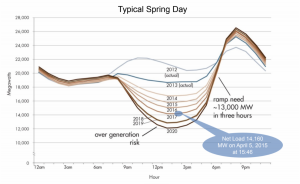
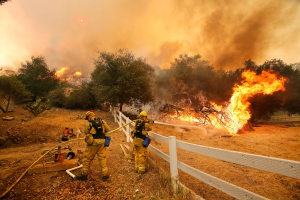 Fires are highly damaging to power system reliability. So, coupled with California’s August heat wave, now microgrids are proving their value with energy resilience. Several EPIC-funded microgrids performed as planned during California’s recent heat, punctuated by 11,000 lightening bolts in 72 hours, including Stone Edge Farm in Sonoma County, and the Blue Lake Rancheria in Humboldt County. The latter owns two microgrids, and voluntarily moved both into island mode during peak hours last week, taking pressure off the grid. Bloom Energy has more than 30 microgrids in California, providing more than 250 MW of power, playing an important role in relieving stress on the grid. Working with utilities and the California Independent System Operator, the U.S. Navy and Marine Corps disconnected 22 ships from shore power and transitioned a submarine base to back-up generators, activating several microgrids, resulting in 23.5 MW load reduction.
Fires are highly damaging to power system reliability. So, coupled with California’s August heat wave, now microgrids are proving their value with energy resilience. Several EPIC-funded microgrids performed as planned during California’s recent heat, punctuated by 11,000 lightening bolts in 72 hours, including Stone Edge Farm in Sonoma County, and the Blue Lake Rancheria in Humboldt County. The latter owns two microgrids, and voluntarily moved both into island mode during peak hours last week, taking pressure off the grid. Bloom Energy has more than 30 microgrids in California, providing more than 250 MW of power, playing an important role in relieving stress on the grid. Working with utilities and the California Independent System Operator, the U.S. Navy and Marine Corps disconnected 22 ships from shore power and transitioned a submarine base to back-up generators, activating several microgrids, resulting in 23.5 MW load reduction.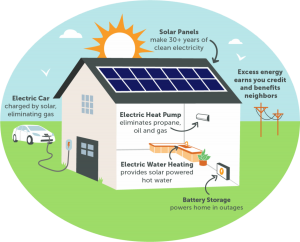
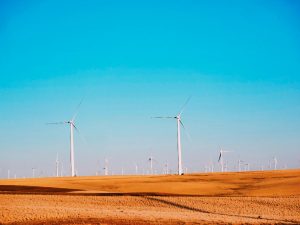 Since 2013, Energy Norway has been funding the Norwegian researchers studying test and control wind turbines in the 68-turbine, 152.4 MW Smola wind farm on a bird-rich island off the Norwegian coast of the same name. There, the scientists have been evaluating “contrast painting.” In a multi-year study, they have found that painting one of three blades black on a wind turbine reduced avian deaths by 71.9%. A single black blade helps the birds to perceive the rotor as an obstacle. Reportedly, kestrels, snipe, and golden plover were among the species to benefit most, but the biggest reduction was in deaths of white-tailed eagles.
Since 2013, Energy Norway has been funding the Norwegian researchers studying test and control wind turbines in the 68-turbine, 152.4 MW Smola wind farm on a bird-rich island off the Norwegian coast of the same name. There, the scientists have been evaluating “contrast painting.” In a multi-year study, they have found that painting one of three blades black on a wind turbine reduced avian deaths by 71.9%. A single black blade helps the birds to perceive the rotor as an obstacle. Reportedly, kestrels, snipe, and golden plover were among the species to benefit most, but the biggest reduction was in deaths of white-tailed eagles.
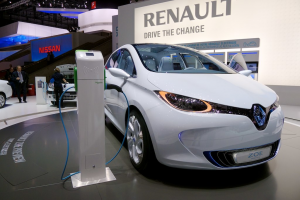 The two countries’ subsidies are among the most favorable in the world, and as such, shoppers have “swarmed to virtual showrooms.” AutoHaus Koenig, a dealership with 50 locations across Germany, advertised a lease on a Renault Zoe that is entirely covered by subsidies. Another car service leases Smart EQs – considered micro urban cars — for 9.9 Euros ($11.71) a month. A more “typical” EVs lease is for 39 Euros ($46) per month. In France, EV sales hit 9.5% in July; German EV sales hit 11%. It’s reportedly “a massive boost.” The Renault Zoe and the Peugeot e-208 are the top sellers in France; the Volkswagen e-Golf is the top seller of battery electric sales in Germany. Tesla comes in at number three in Germany, after Volkswagen and Renault.
The two countries’ subsidies are among the most favorable in the world, and as such, shoppers have “swarmed to virtual showrooms.” AutoHaus Koenig, a dealership with 50 locations across Germany, advertised a lease on a Renault Zoe that is entirely covered by subsidies. Another car service leases Smart EQs – considered micro urban cars — for 9.9 Euros ($11.71) a month. A more “typical” EVs lease is for 39 Euros ($46) per month. In France, EV sales hit 9.5% in July; German EV sales hit 11%. It’s reportedly “a massive boost.” The Renault Zoe and the Peugeot e-208 are the top sellers in France; the Volkswagen e-Golf is the top seller of battery electric sales in Germany. Tesla comes in at number three in Germany, after Volkswagen and Renault.